.png)
The wise Greek philosopher Heraclitus once said, “the only constant in life is change.” And while we aren’t always in charge of the outcome of our life, we’re always in control of the effort we put into it.
Nobody chooses to be diagnosed with COPD, but if it does happen, you’ll need to adapt, adjust, and start planning for the future rather than looking to the past. Implementing simple lifestyle changes like an improved diet, exercise routine, and oxygen therapy will help you achieve the best health outcome possible.
Investing in high-quality oxygen equipment that meets your doctor’s recommendations should be your first priority when you’re diagnosed with COPD. Ensuring that your lungs are properly saturated with oxygen means every organ in your body will have the oxygen it needs to stay healthy, and in turn, you’ll feel much better throughout your day-to-day life.
Two of the hottest portable oxygen concentrators currently on the market are the Inogen One G3 and the Caire FreeStyle Comfort. In this post, we’ll compare them so that you have a better idea of which one will meet your lifestyle and medical needs. If you have any questions about portable oxygen concentrators for seniors, feel free to visit our contact page and either give us a phone call or send us an email. One of our respiratory specialists will reach out to you.
What is a Portable Oxygen Concentrator?
A portable oxygen concentrator, portable oxygen generator, or O2 concentrator, is an electronic device that delivers medical-grade oxygen to the user. Unlike an oxygen tank or liquid oxygen tank which has oxygen stored inside of it, portable oxygen concentrators take in ambient air, remove impurities, and output high purity oxygen.
.png)
Portable oxygen concentrators are much lighter than oxygen tanks meaning respiratory patients are able to experience a lot more freedom and independence in their daily life. Rather than being stuck at home all day and night, oxygen patients are no able to get out and enjoy all of the things they did before they were diagnosed with COPD.
One of the greatest things about portable oxygen concentrators is how quickly they advance. Just several decades ago, POCs were clunky machines that had to be wheeled around with a rolling cart. They were also very power-hungry, so batteries didn’t’ last more than a few hours with a full charge. But since then, these machines have come farther than we could’ve imagined.
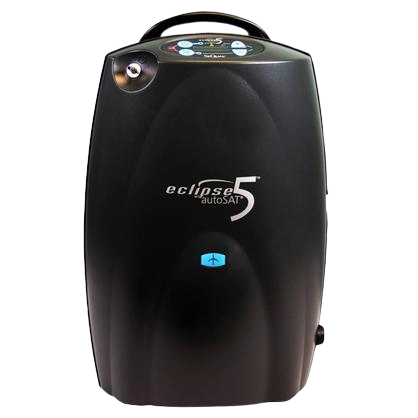
There are two different kinds of portable oxygen concentrators: pulse dose and continuous flow. Think of pulse dose like using a drinking straw; when you inhale, you receive a set amount of water. However, continuous flow is more like using a drinking fountain; the water comes out of the spout regardless of whether you’re drinking it or not. Just like drinking from a straw, pulse dose portable oxygen concentrators are much more efficient because there is no wasted oxygen. As a result, these machines are much smaller and lighter than their continuous flow counterparts.
Both the Caire FreeStyle Comfort and the Inogen One G3 are pulse dose portable oxygen concentrators.
{{cta('fa8abc2a-1e88-4fa3-82fd-1cb5b9ed43b2','justifycenter')}}
Maximum Oxygen Flow Setting
If you’re trying to decide between the Caire FreeStyle Comfort and the Inogen One G3, the best place to start your search is with the maximum flow setting of each device. Unfortunately, flow settings aren’t consistent across all portable oxygen concentrators, so you’ll also need to take a look at the total oxygen output of each device on its highest setting in order to compare them fairly.
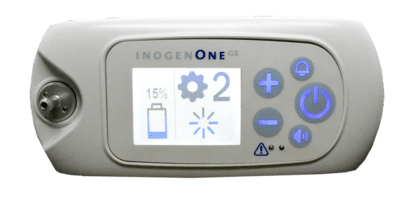
The FreeStyle Comfort has 5 pulse flow settings with a maximum oxygen output of 1,050 milliliters per minute (ml/min). The Inogen One G3, on the other hand, has two different versions: an older model and a newer model. The newer model has the same amount of flow settings and same output as the FreeStyle Comfort, but the older version only has flow settings 1 through 4 and a maximum oxygen output of 840 ml/min. It’s important to make this distinction, especially if you’re buying a G3 that is used or refurbished. When it comes time to replace the sieve beds (filters) in your device, you’ll also need to know what model of G3 you have because they are not interchangeable.
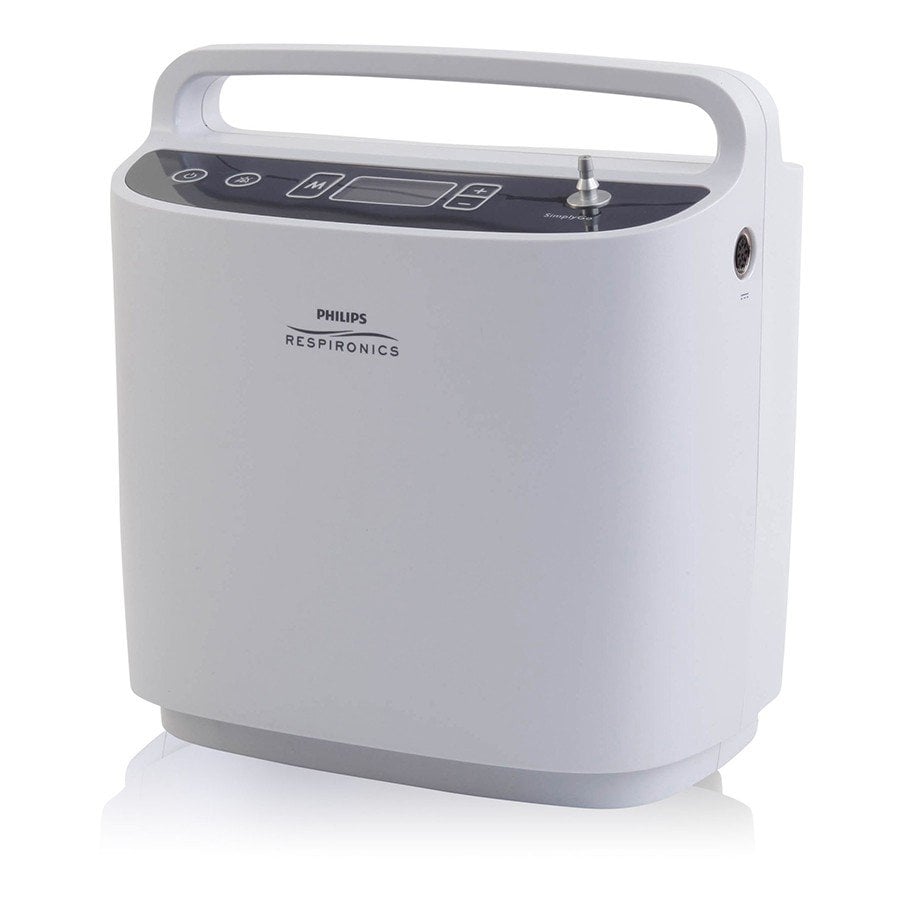
Since the FreeStyle Comfort and G3 are both pulse flow concentrators, you need to be careful when comparing them to continuous flow oxygen concentrators. If you have a continuous flow concentrator that delivers 3 LPM of oxygen, you have to remember that most of that oxygen is wasted. Whereas on a pulse dose unit, all of the oxygen that is being administered is being inhaled by the user. There are a lot of variables to consider so it’s best to consult your doctor and keep a pulse oximeter handy to ensure your blood oxygen levels are normal while you’re using your oxygen machine of choice.
Battery Life
One of the most common reasons for buying a portable oxygen concentrator is the improved freedom that it offers oxygen patients. Throughout the better part of the 20th century, being diagnosed with COPD meant being bound to your home for the rest of your life. However, with the advent of portable oxygen, it’s easier than ever before to get out and enjoy your life without having to worry about whether or not your oxygen needs are met.

Portable oxygen concentrators depend on reliable and powerful lithium-ion batteries to power them. Fortunately, battery technology has been improving rapidly within the past couple of decades due to an increased demand for things like mobile phones and even electric cars. This technology also allows devices like the G3 and FreeStyle Comfort to deliver medical grade oxygen anywhere in the world without constantly being plugged into the wall.
In the grand scheme of things, the Inogen One G3 and FreeStyle Comfort are industry leaders when battery life is a concern. Each unit offers two different battery options: an 8-cell version and a 16-cell version, with the latter offering twice as much battery life as the former. Each device comes with a single 8-cell battery, but it can usually be upgraded to the 16-cell version for a small cost.

Below is the expected battery life for both oxygen machines:
Inogen One G3 Battery Life:
| Flow Setting | 8-Cell Battery | 16-Cell Battery |
| 1 | 4.5 Hours | 9.5 Hours |
| 2 | 4.0 Hours | 8.5 Hours |
| 3 | 3.0 Hours | 6.0 Hours |
| 4 | 2.0 Hours | 4.0 Hours |
| 5 | 1.7 Hours | 3.3 Hours |
Caire FreeStyle Comfort Battery Life:
| Flow Setting | 8-Cell Battery | 16-Cell Battery |
| 1 | 8 hours | 16 hours |
| 2 | 4 hours | 8 hours |
| 3 | 3 hours | 6 hours |
| 4 | 2.25 hours | 4.5 hours |
| 5 | 2 hours | 4 hours |
{{cta('43b79c5e-6bd6-4f02-ac27-2d038d20c146')}}
Weight and Size
COPD is a condition that affects people of all ages; but generally speaking, it’s also a condition that has a bigger impact on older adults and seniors than it does on younger generations. Aging is associated with difficulty walking, back pain, and chronic pain, so there’s no sense in COPD patients carrying around heavy and bulky oxygen machines if they don’t need to.
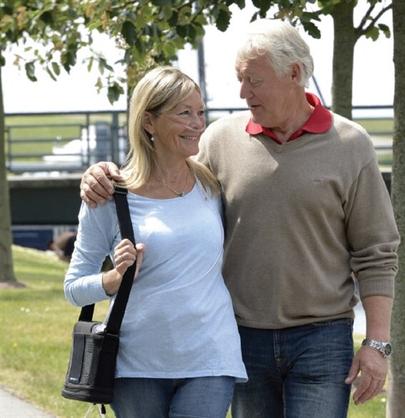
The Inogen One G3 weighs in at only 4.7 pounds making it one of the lightest concentrators you can buy. The Caire FreeStyle Comfort isn’t too far behind, however, weighing just 5 pounds with the 8-cell battery. It should be noted that if you upgrade to a larger 16-cell battery, this will add a little bit of weight.
Size is also an important factor to consider. With a bulky and awkwardly shaped device, you may have trouble navigating busy areas and you might find it difficult or impossible to store. Fortunately, both of these portable oxygen concentrators are about the size of a purse or handbag, meaning they’re small enough for convenience but not so small that you’re going to lose them.
The dimensions of the Caire FreeStyle Comfort are 10” H x 7.3” L x 3.1” W and the dimensions of the Inogen One G3 are 8.25” H x 8.75” L x 3.0” W. Both portable oxygen concentrators come with an adjustable carrying strap so that you can rest the device under your shoulder when you walk without it impeding your movement. And if you’re interested there are other carrying accessories such as the G3 backpack and the G3 Rolling Backpack.
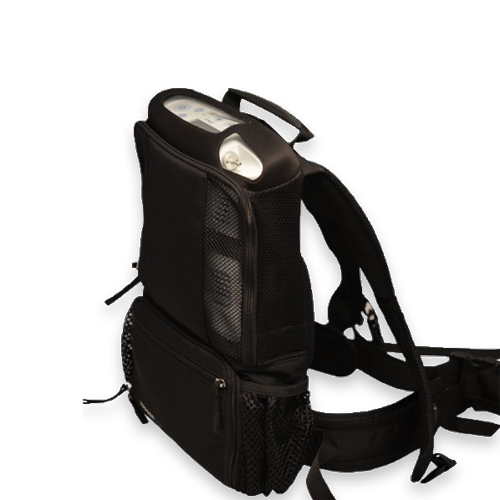
Regardless of which option you choose, both of these devices are light and easy to carry. They also offer plenty of other alternatives if you don’t want to use the standard carrying case that comes with each device.
FAA Approval
The Federal Aviation Administration (FAA) is an organization that manages many of the commercial flight regulations in the United States. One of the most important things they have control over is the safety protocol that all airlines must follow in order to keep their passengers safe during the flight.

In the past, oxygen machines were strictly prohibited on airplanes because they were bulky and posed a significant fire hazard. Oxygen tanks, specifically, have no built-in safety features and they’d be difficult or impossible to store under the seat for takeoff and landing. Fortunately, over time, oxygen manufacturers began to implement more safety features into their concentrators and now, most of them are approved for in-flight use.
{{cta('b59df0c1-c4de-47a8-8e1c-0d33d4b414aa','justifycenter')}}
You’ll be happy to know that both the Caire FreeStyle Comfort and Inogen One G3 are approved by the FAA. It’s recommended, however, that you contact your airline at least 48 hours before your flight to notify them about the type of oxygen device you will be bringing. When you arrive at the gate, be sure to check-in at the customer service desk. Most airlines will require you to have at least 1.5 times as much battery life as the duration of the flight, so you may have to either upgrade to a bigger battery or have a second one on hand.
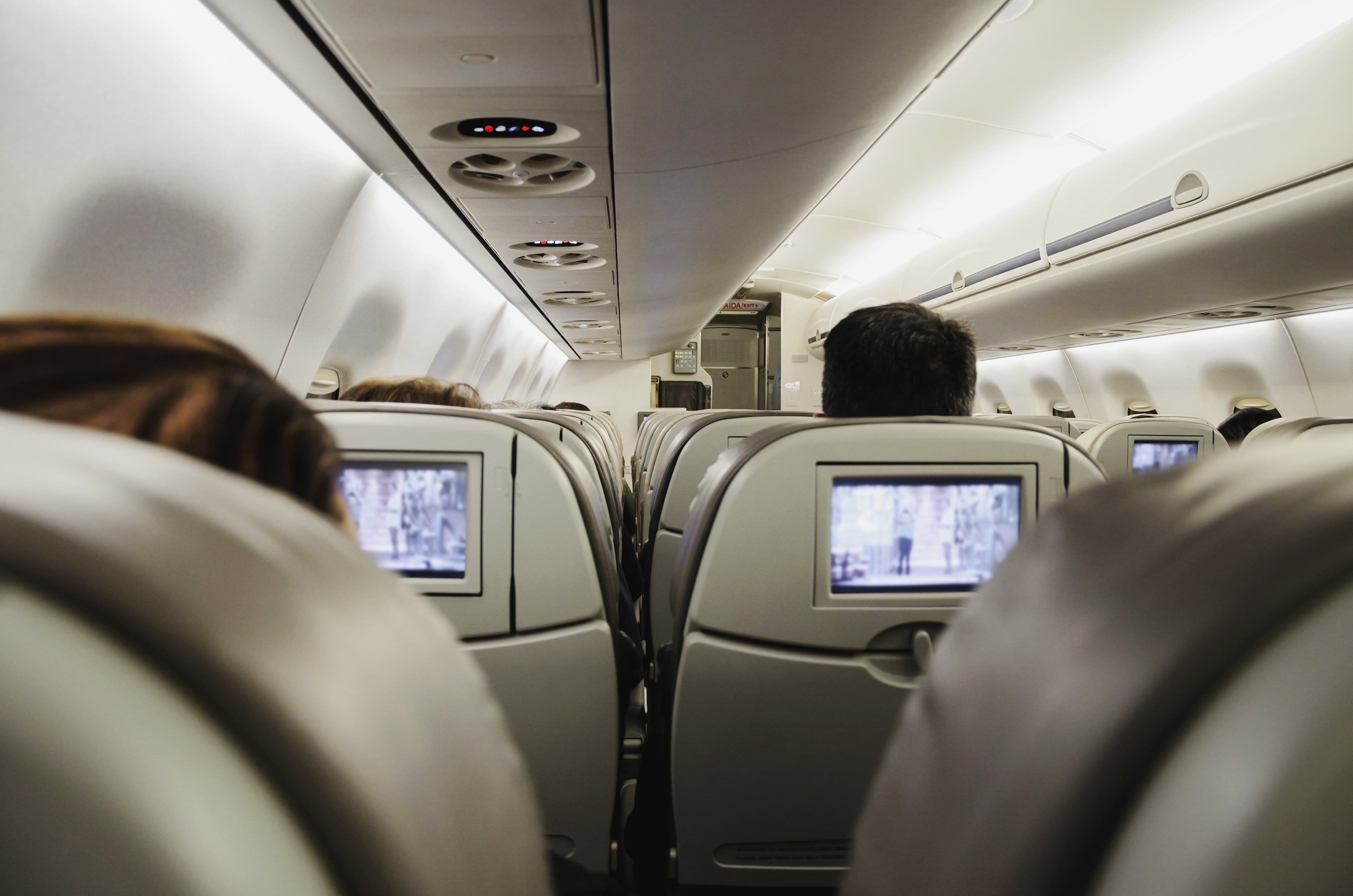
Additional Features
We’ve gotten to the point with oxygen concentrators where manufacturers are starting to get really creative in dealing with specific issues that oxygen users face. A great example of this is a program called CAIREview™ which was created specifically for the Caire FreeStyle Comfort portable oxygen concentrator.

CAIREview™ is a data-tracking software that keeps track of exactly how much oxygen you’re using and for how long. In order to view this information, you just need to install the app on your phone and follow the instructions to connect it to your FreeStyle Comfort via Bluetooth. You can also send this information directly to your physician or oxygen supplier for interpretation. In certain cases, your oxygen supplier can even troubleshoot issues with your device remotely.
This technology is known as telemedicine and it’s becoming increasingly popular, ensuring that people stay connected to health professionals no matter where they are in the world. If you’re interested in learning all the ways telemedicine is helping COPD patients check out this article we wrote a couple of months ago.
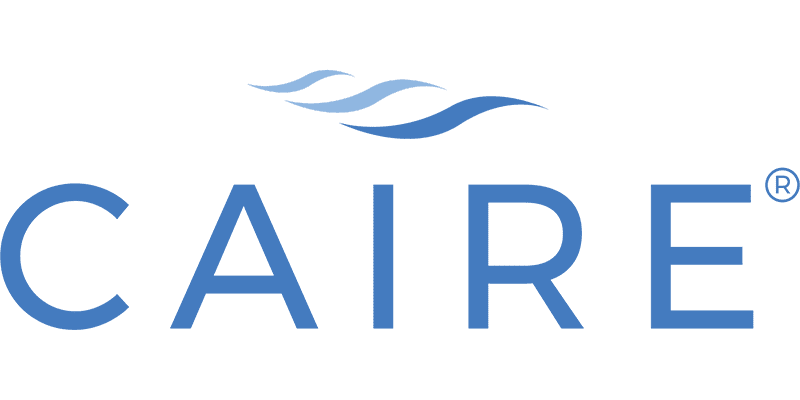
Unfortunately, the Inogen One G3 doesn’t have too much to offer in the way of additional features. While Inogen did come out with a similar program called “Inogen Connect,’ it wasn’t introduced until the Inogen One G4 came out. This is not necessarily a bad thing, however, as many patients are only interested in using the core functions of the device.
Usability
Last but certainly not least, it’s important to take a look at the usability of each device. While there are many different facets of usability, when it comes to portable oxygen devices, you’re going to want something that doesn’t cause any unnecessary problems while you’re away from home. There’s nothing worse than having to pull out your user manual or call up your oxygen supplier in the middle of your vacation or leisure time in order to figure out how your device works.

Luckily, both Inogen and Caire Inc. spent years designing these oxygen machines in order to make them more user-friendly and hassle-free than ever before. For the most part, these oxygen concentrators have a hands-free operation. Simply turn the device on, select your flow rate, and enjoy the freedom that comes with knowing your oxygen needs are covered no matter where you are.
Conclusion
The Inogen One G3 and the Caire FreeStyle Comfort are two of the best portable oxygen concentrators money can buy — and for good reason. Each provides oxygen users with ample oxygen output, a lightweight design, and a long battery life so you can stay out all day without worry.
While the Caire FreeStyle Comfort has unique telemedicine software built-in, the Inogen One G3 has its advantages too. Since the G3 is a bit older, you might have an easier time finding a used or refurbished one or even a new unit on sale. There are a lot of different factors to consider, so be sure to visit our contact page and either give us a call or send us an email to speak with a respiratory specialist.

